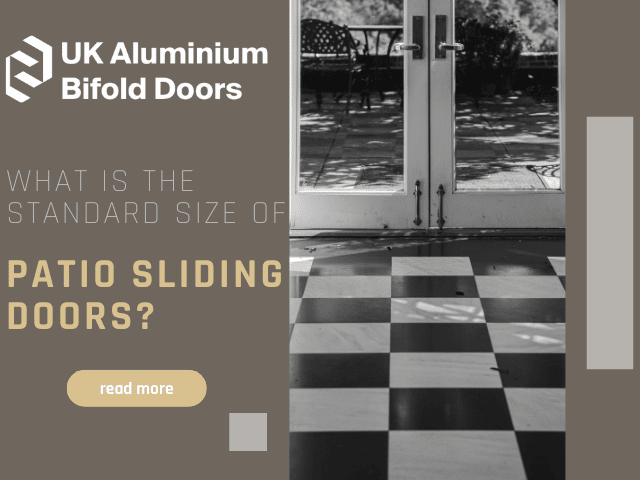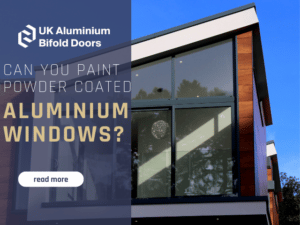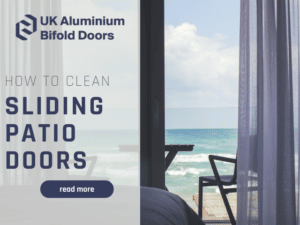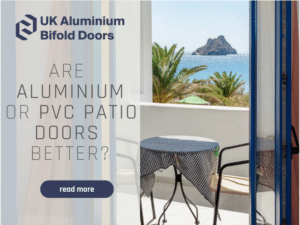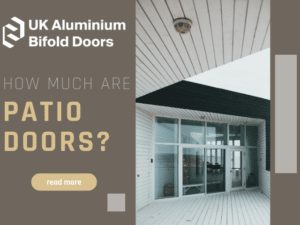Sliding glass doors are the most popular doors to have externally because they make any room feel bigger and brighter. An external glass sliding door can even increase the value of your home.
Glass doors allow more natural sunlight to enter the home, making the room they’re attached to feel airy and have the illusion of being larger and roomier. It’s a great and more affordable way to renovate your home and make it larger. Or, at least, it will feel larger.
A glass sliding door system can help you open up your home to your outdoor space, like a patio or a garden, and make the two spaces seem more cohesive.
In this article, we will walk you through the standard size of a sliding glass door and everything you need to know about the perks of having external sliding doors in your home.
How Wide is a Sliding Patio Door?
Well, there’s no standard size for sliding doors, so the width will vary. But, sliding patio doors have to be exactly the right size; there is an extremely small margin for error. If the sliding doors don’t fit exactly, they won’t be as secure or insulate your home as effectively as they could be since you can’t adjust the doors.
To find out which sliding patio door sizes are appropriate for your home, you’ll need to take some careful measurements so you can buy the correct size.
Sliding patio doors typically come in sets of twos and threes; it depends on the space that you’re planning on covering with the doors. People generally pick sliding door systems that have two doors.
What are Common Sliding Patio Door Sizes?
While there is no single standard size for sliding patio doors and sliding glass doors, there are a few sizes that they typically come in depending on how many panels you decide on. You’ll need more panels for a wider space, or you’ll need wider panels.
The typical heights for 2 or 3-panel sliding glass doors are:
- 2032 millimetres
- 2082 millimetres
- 2438 millimetres
The typical widths for 2-panel sliding glass doors are:
- 1524 millimetres
- 1828 millimetres
- 2438 millimetres
The typical widths for 3-panel sliding glass doors are:
- 2743 millimetres
- 3658 millimetres
None of the common sizes are right for my home
If none of the common or offered sizes fit with the space in which you want to fit your sliding doors, the best route to go with is to have bespoke doors made. Bespoke doors are made to measure, so you’ll get them custom-made to the right size.
Types of Sliding Patio Doors
Typically, a sliding door has multiple glass door panels that slide sideways along a track, with one glass panel remaining stationary and in place. They give you quick and easy access to your outdoor space.
These doors are great because they don’t open outward or inwards, which means that they don’t take up space. They can be slid completely open or just slightly open if there happens to be some bad weather. They also stay stationary and can’t be accidentally slammed shut in the face of strong winds.
A glass sliding door also offers the widest and most uninterrupted views because it has so much open glass within the door frame and slim frames.
The choice of sliding door type that you go with will partly be determined by whether or not you’re replacing existing doors or if you’re adding the doors as part of a new renovation or extension.
A new opening will offer your more flexibility and choices than an existing opening will.
Inline sliding doors
This is the most common and traditional style of sliding door. There is usually a track that the doors can slide along horizontally to open and close using the handle.
This sliding door system is usually available in panel configurations of two, three or four. It’s not uncommon to have multiple tracks for the doors to slide on. These multiple tracks allow the doors to slide both left and right.
These are the simplest sliding doors to install and are the easiest to work with. They also require less maintenance and upkeep.
Lift and slide sliding doors
This is a very popular sliding door type that relies on a complicated system of gears in the door’s sash. When the handle is turned, this system of gears allows the door to be moved away from the frame and slid into any desired position.
The panel configuration is typically at least 2 panels and 6 panels at most. This type of sliding door type is best suited to heavier doors that have frames made from heavier materials like timber or bigger doors that just naturally weigh more.
Tilt and slide sliding doors
This type of sliding door set is comparable to a combination of sliding doors and a tilt-and-turn window.
This combination of mechanisms allows you to open the top of the door at a tilted angle if you just want to have some ventilation in the room. The bottom of the door remains hinged to the frame, and the mechanisms are controlled by the door handle.
Slimline sliding doors
Slimline doors have slim door frames that give them a minimalist appearance. This gives you more glass and less frame to look at, allowing more natural sunlight into the house.
Pocket aluminium sliding doors
This type of sliding door is best suited to an entirely new opening as opposed to an existing open. With these panel configurations, the sliding glass doors slide into pockets in the wall, meaning that they disappear completely when open.
This is the best way to maximise the opening and create a grand and dramatic opening with your new sliding doors.
Open-corner sliding doors
These are the most modern types of sliding glass doors. These doors allow you to have the sliding doors meet at a corner. You can choose not to have a visible corner post, or you can opt to keep it if it suits your aesthetic.
You can combine door systems and also make these pocket sliding doors as well. Creating an even more contemporary look that will surely add value to your home.
Because of the nature of these sliding doors, there are a few things you’ll have to take into consideration before you buy your doors.
- You’ll most certainly need to consult a structural engineer because doors need support structures. It’ll be up to your engineer to tell you what you can and can’t do with your space and the vision you have in mind.
- You might also want to consult an architect to get the best possible design and professional insight for all the possibilities you have.
This advice is especially relevant if you’re planning on creating a new opening in your home to accommodate your doors. Involve your chosen installer as soon as you can and let them be a part of the process.
Automatic sliding patio doors
There is also an option to get automatic doors that you can open and close with just a button.
Sliding Door Materials
The sliding door material that you choose can also dictate the style and size of patio doors that you can get and afford for your home.
uPVC
This is a popular choice for the frames on sliding glass doors. They’re a popular choice because they’re quite affordable and low maintenance. You can also usually get uPVC in a wide range of colours.
This material has been less popular lately because there are now better, sturdier materials that offer more benefits than uPVC does. uPVC is also not as stylish as the other materials on offer and can look a little outdated these days.
This is one of the reason why aluminium and uPVC patio doors are often compared, as many people want to know which is better out of the two very popular materials.
Timber
Timber doors are high-quality and look great, but they require a lot of maintenance to keep them in good order. Doors with this kind of frame are best suited to traditional homes as they have a classic and timeless look.
Timber is also available in a variety of styles which makes it more appealing. The timber frames are also strong enough to hold bigger panes of glass and are suitable for larger door sizes.
There are a few downsides, one being the price. Timber doors will require more materials and workers to manufacture and install. The other downside is also the maintenance; the doors will require regular painting and weatherproofing to keep them in good condition.
Aluminium
Aluminium is currently very popular in the world of sliding doors. The big downside to aluminium, before, was that the frames became easily discoloured, but now they come with a powder coating that prevents that.
The powder coating also means that these doors can come in a wide range of colours, just like uPVC. Unlike uPVC, aluminium is sturdy and can support the weight of larger doors with slimmer frames.
This means that aluminium frames provide a sleeker, more modern look that fits in with any style of architecture. Aluminium frames are also energy efficient and keep the house well insulated against heat loss.
How to Get the Measurements for Your Patio Doors
The best way to ensure that you purchase the right size of sliding patio doors is to take measurements of the space before you place an order.
You’ll be measuring the “rough opening”, which is the opening in which your doors will sit. These measurements won’t include any mouldings or frames.
Step 1
Makes sure that you have the appropriate tools:
- A tape measure
- A pen or pencil
- A notepad
It’ll be helpful if you can get an extra set of hands and eyes to help you take the measurements.
Make a rough sketch of the opening you’re going to use for your sliding glass door so that you can note down where each measurement is taken from.
Step 2
You’re going to be taking three different measurements of the width of the door; the top, the bottom and a measurement in the middle of the opening.
The numbers that you get should be very similar. If you happen to find any variation in the measurements, look for a door that will fit within the smallest number.
Step 3
You’re going to be taking three different measurements of the height of the door; one on the top, one on the bottom, and one in the centre. Make sure to measure all the way to the concrete on the door sill.
Step 4
This is the most important step; you double-check all of your measurements and make sure that they’re all accurate or correct them if they aren’t. This step can save you a lot of trouble down the line.
Step 5
When you have your final measurements and you’ve double-checked that they’re accurate, you’ll need to take 10mm off from both of your measurements.
This accounts for the trim and other details that you won’t necessarily see. Once you do that, the measurements you have should help you buy an adequately sized set of patio doors.
Picking your patio doors isn’t the last thing you have to do when installing. Check out our blog on what to put on patio doors to make them look good.
FAQs
Can I install my own sliding patio doors?
Yes, you can probably install or replace your sliding patio doors yourself. It’s not recommended if you’ve never had experience installing windows and doors; that experience is invaluable for this DIY project.
Remember that there’s very little margin for error with installing your doors if you want to ensure you have a secure and weatherproof fit. It’s wiser to just allow the professionals to handle the installation.
If you are curious as to how much a sliding patio door is with installation, we have a guide that can help you to find out more.
Can I get a sliding glass door with double glazing?
Yes, you certainly can. You can choose to have a sliding glass door with either double or triple glazing, depending on your budget.

